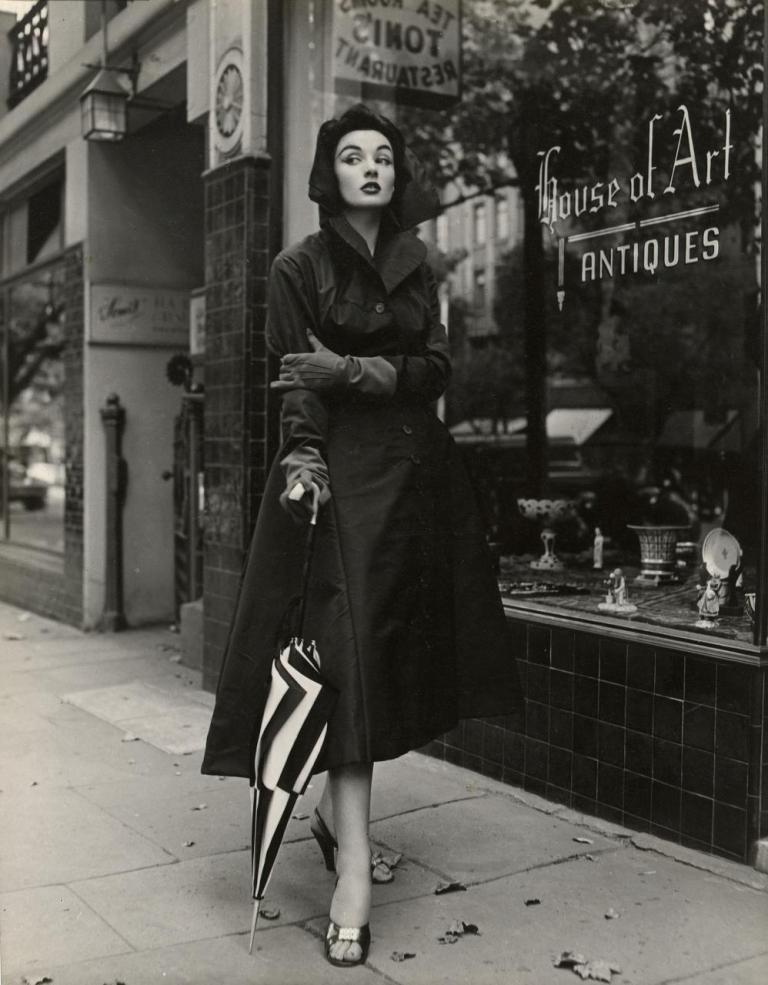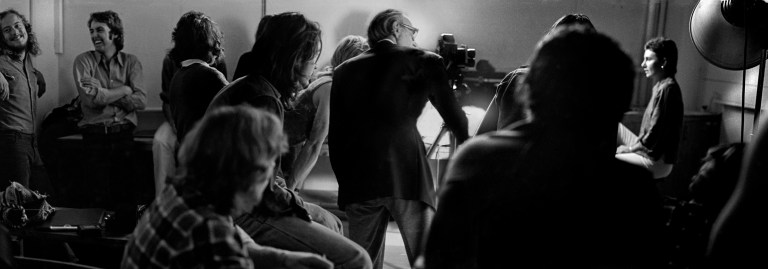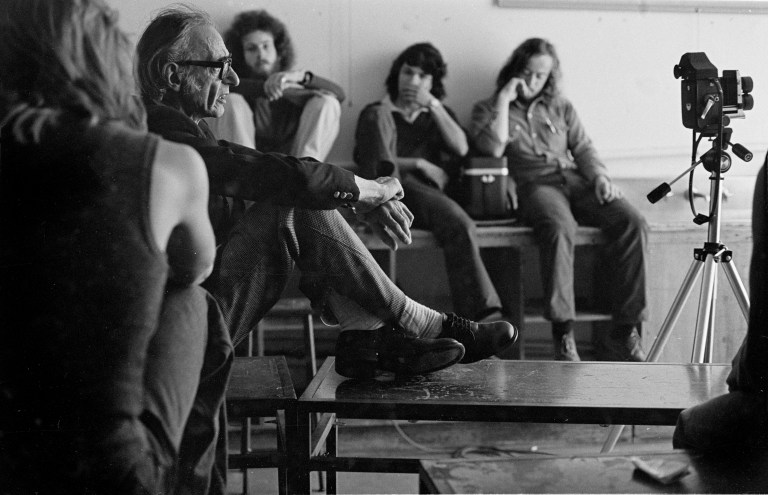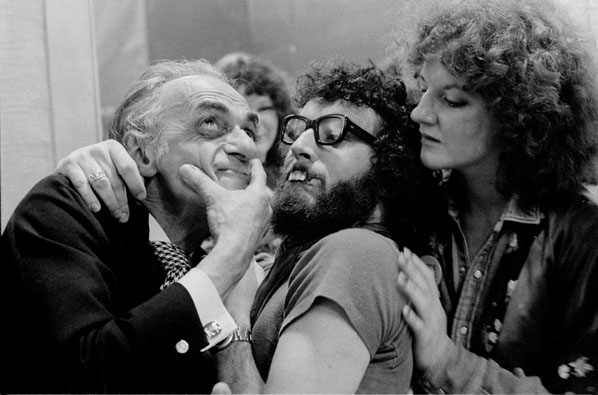 October 21: Time to remember a great photographer and extraordinary photography educator; Athol Shmith who died on this day in 1990.
October 21: Time to remember a great photographer and extraordinary photography educator; Athol Shmith who died on this day in 1990.
I was lucky enough to be his student at Prahran College in Melbourne, Australia, and graduated with their Diploma of Art and Design forty years ago, so forgive me if this post involves a bit of reminiscence and is an undisguised paean to someone who was a great influence in my life.
I’d belatedly discovered that university Art History would keep me away from my first love, photography; they never deigned to mention the medium in my undergraduate course at Melbourne Uni…it wasn’t considered an art form in the late 1960s in Australia. So I dropped out and found myself in the dingy basement of the Prahran College of Advanced Education.
Standing before a beanstalk of a man, I presented my entrance folio, some days after the closing date, apparently. He muttered something about remembering my late father and consented to consider my entry, even though ‘we’re full up’. In the summer heat, my flush-mounted full-frame 16×20 prints were curling in protest at the crappy spray adhesive and their cheap strawboard mounts, while Athol, in a cloud of cigarette smoke, scrutinised them at an uncomfortable range. He called in John Cato. I vaguely remember they asked me a few questions, then told me to take a walk.

When I returned, they were sitting in Athol’s little office deep in conversation and seemed to have forgotten me. Hesitantly, I knocked on the door; “Oh, McArdle,” said Athol…a dramatic pause followed..,”You’re in. I think you could edit your folio more thoroughly. We’ll help you with that.” He turned back to John, while I stood there blushing and beaming foolishly. John asked to be remembered to my mother in indication that it was time for me to go. I was stunned…I had now idea that they’d know my parents! So I collected my prints, leaving with the nagging feeling that maybe I’d only got in because of a personal connection..was this nepotism? But I was in. Later I’d find out that the photography world in Melbourne was tiny, that everyone knew everyone, and that other students too had a familial connection with someone in photography.
Athol was a native of Melbourne and grew up not far from our little College in St Kilda where at a young age he abandoned his music and started a studio. With the advent of WW2 he’d graduated to a studio in the tree-lined Collins Street in the graciously named Rue de la Paix building at 125, across the road from my father Brian McArdle’s office in the Coates building, which was then the only glass high rise threatening the renowned Parisian atmosphere of the surrounding Victoriana (which in the 1980s were reduced to mere decorative facades for towering skyscrapers, or worse, swept away altogether). The best thing you can read about this era, and about Athol, is this truly inspired piece of journalism by Athol’s son Michael.

There he was at close quarters to The Oriental cafe, first to serve patrons at tables on he pavement (lending credence to the term ‘The Paris End’ to describe this stretch of Collins St.) and to other photographers of the 1940s-1970s; Helmut Newton, Jack Cato, Wolfgang Sievers and Mark Strizic, with a Bohemian touch added when Georges Mora and artist wife Mirka lived at number 9, the Grosvenor Chambers, and opened their Mirka Cafe, 183 Exhibition Street.

Later joined by business partner John Cato (Jack’s son), Athol photographed the lissome fashion models of the era (three of whom he married) and celebrities including Noel Coward, Vivien Lee, Robert Helpman, Laurel Martyn, Prince William, Yehudi Menuhin, Isaac Stern, Sir Dallas and Dame Mabel Brooks, artist Sir Daryl Lindsay, and many more, but many a soldier, including my father, was photographed by him before they went off to New Guinea or elsewhere in the Empire to fight. Cato pursued the more commercial work promoting cars, furniture and factories.
After so many years in the studio, Athol knew lighting; “A photographer’s tool is light.” he would say to his class (“…and heavy is his heart!” unkindly whispered some wag behind the great man’s back). We were held spellbound by the jargon he spouted around portraiture; there was no doubt that here we were getting the full inside story, we’d entered the mystique of real photography: about ‘hard’ and ‘soft’ light, ‘key’, ‘fill’, ‘bounce’ and ‘back’ lighting, reflectors, background washes ingeniously textured with a handy tree branch or cardboard cutout, ‘inky-dinky’ hair lights on teetering booms,  scoops, floods and spots, cheesecloth and vellum diffusers, ‘cutters’, ‘hatchet’ lighting for manly noses and jaws and ‘butterfly’ lighting to lift the cheekbones of female subjects. “Light for the shadows” he would say, then wheel in a six-foot high Brownbuilt steel cabinet crammed with a multitudinous array of 500 watt floods, threaten all of Prahran with a blackout by switching it on, then hang a smouldering sheet in front of it to show us how to banish shadows altogether (“just the thing to show off the garment fabric in a fashion shot”). The College studio was a maze of ancient lights on well seasoned stands, most of which had come from his own studio, and they were ours to use! I was soon on my way to my first big commission; using my newly learned lighting skills in my illustrations for a book on the sculpture of Guy Boyd.
scoops, floods and spots, cheesecloth and vellum diffusers, ‘cutters’, ‘hatchet’ lighting for manly noses and jaws and ‘butterfly’ lighting to lift the cheekbones of female subjects. “Light for the shadows” he would say, then wheel in a six-foot high Brownbuilt steel cabinet crammed with a multitudinous array of 500 watt floods, threaten all of Prahran with a blackout by switching it on, then hang a smouldering sheet in front of it to show us how to banish shadows altogether (“just the thing to show off the garment fabric in a fashion shot”). The College studio was a maze of ancient lights on well seasoned stands, most of which had come from his own studio, and they were ours to use! I was soon on my way to my first big commission; using my newly learned lighting skills in my illustrations for a book on the sculpture of Guy Boyd.
 But it was not all just lighting. Athol was a genius at directing models. Urbane, sophisticated and witty, he was by no means handsome, but always impeccably dressed, even when lecturing, in brass-buttoned navy-blue reefer jacket, red waistcoat and Windsor knotted tie…always…while the male students sitting around him (and a couple of his fellow lecturers too) wore flared jeans, beards, long hair and sandals or bare feet. But his mesmerising pop eyes, conspicuous nose and gangly limbs he put to good use. Verbal directions would only interrupt the stream of banter that he used to calm nervous sitters, so after saying perhaps, “Head to the light, now eyes to camera” as if directing a movie star on set, he instead used mime and subtle hand signals; the subject would barely be conscious that they had lifted their chin, shifted their weight, or relaxed their shoulders just the way he wanted them to, they just did it, prompted by his own gestures that they then imitated.
But it was not all just lighting. Athol was a genius at directing models. Urbane, sophisticated and witty, he was by no means handsome, but always impeccably dressed, even when lecturing, in brass-buttoned navy-blue reefer jacket, red waistcoat and Windsor knotted tie…always…while the male students sitting around him (and a couple of his fellow lecturers too) wore flared jeans, beards, long hair and sandals or bare feet. But his mesmerising pop eyes, conspicuous nose and gangly limbs he put to good use. Verbal directions would only interrupt the stream of banter that he used to calm nervous sitters, so after saying perhaps, “Head to the light, now eyes to camera” as if directing a movie star on set, he instead used mime and subtle hand signals; the subject would barely be conscious that they had lifted their chin, shifted their weight, or relaxed their shoulders just the way he wanted them to, they just did it, prompted by his own gestures that they then imitated.
We came to understand that photography was not about the camera, but how we interacted with our subjects. To Athol, his Hasselblad was an extension of his long limbs, like his ever-present cigarette holder, his fingers manipulating the camera’s controls like a prestidigitator’s, though he appeared to pay it no attention, instead beaming all of his spider-like concentration onto the sitter.

Once he demonstrated his method; “Freeze!” he said in a commanding tone, walking into the classroom one day, “Don’t move. Now look around you at your classmates…what do you see? No-one is sitting in the same pose! We come with our own personal pose; use that fact when you photograph people. Just look at them before you start ordering them around and you’ll know straight away how to photograph anyone!”

Athol’s assignments challenged us to put such skills to use with our humble Pentaxes and Minoltas. We were pushed well out of our comfort zone and into “The Greek Community”, or required, with no prior warning (there was no such thing as a ‘syllabus’), to photograph “A Day at the Races”, or “Anzac Day” (for most of us who had dodged the draft and had marched against Vietnam, this was conscience-altering), or we’d be sent to the Ballet School. There, my classmate Bill Henson, who’d never photographed people, had a moment of revelation that led to an exhibition at the National Gallery of Victoria at the tender age of eighteen.

Most of us experienced such moments of insight and transformation, though without the instant fame, during an Athol assignment, or during the gruelling process of assessment. At these regular sessions, everyone in the class was required to be present, and to speak up, to make some judgement about fellow students’ work alongside sometimes three lecturers’ inquisitions. His lit cigarette in its holder hovering dangerously close to our precious prints, Athol would scrutinise every offering before starting over to deliver his judgement. There were often tears, but we learnt to see our own work through others’ eyes, to divest ourselves of prima donna egocentrism and to find a voice in speaking about images.
When I graduated to become a freelance photographer and art teacher, it was the memory of these assignments and this assessment method that I took with me. However, I regret they have no place in contemporary educational institutions with their quality assurance, OH&S, student feedback, rigid curricula, and no room for teacher innovation or on-the-fly individualisation prompted by the particular momentary students’ needs in one’s classes.
Furthermore, Athol was not one to stand in an Ivory Tower. His interactions with his class included inviting the whole lot back to his home in South Yarra, where we admired his art collection that included exquisite original portrait drawings by Ingres, and after his divorce, we partied at his tiny new apartment. We might regard Athol with reverence, but he would soon show he loved to have fun, to act the fool. He might dress as if for the opera, but was utterly without pretension and not afraid to butter his tie with paté to lighten the mood at an exhibition opening. By a process of osmosis, we came to love photography as he did. He spoke of the medium using the terminology of the musician he was in a past life, and of the lover of esoteric ‘Maaahler’ recordings that he had become.

Athol’s selection of his associate lecturers was inspired. There was his business partner John, whose father had written the first (and at the time, the sole) history of photography in Australia, and whom Athol seconded from managing the Collins Street studio that was still in operation. John had met in person many of the greats through his father, and helped edit his book. At a time when photography books could be counted on one hand, he was the resident historian of our medium with intimate, uniquely Australian, knowledge of his subject. Paul Cox, recruited recently after having established The Photographers Gallery in South Yarra, was a Dutch beatnik and occult filmmaker, changelessly dressed in sagging black corduroy jacket and slacks, and sandals whatever the weather. Assisting with the teaching of colour processes was Bryan Gracey whose statuesque figure and Michelangelesque features belied the fact that he was barely older than his students, who in those days were mostly in their early twenties. Derek Lee had his training in the UK Midlands and was a magician, conjuring all sorts of tricks from the chemistry of toners and stains and the complexities of the new medium of video.
These were halcyon days! Thank you Athol, from the bottom of my heart!
















21 thoughts on “October 21: Athol”